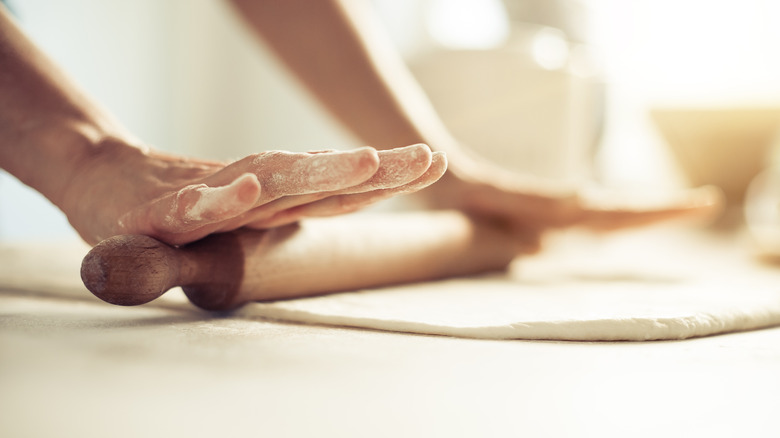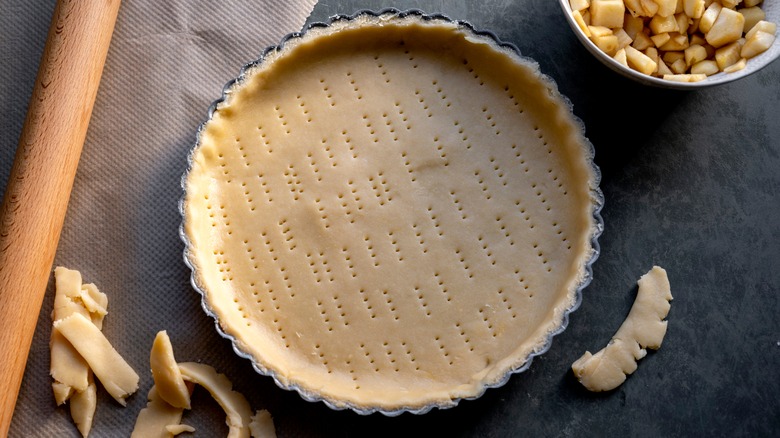How To Avoid Crumbly Pie Dough
In the wide world of desserts, there are few categories more tempting than pie. Whether quivering with banana pudding, piled sky-high with meringue, or bursting with jammy, seasonal berries, pie is a dessert we can't seem to get enough of — especially when it's homemade. And although tasty, pie is not always among the easiest of desserts to make at home — usually due to the tricky nature of the crust.
In theory just a simple mix of, typically, all-purpose flour and plenty of fat, but pie crust can be a fickle beast; prone to variously sticking to your rolling pin; emerging from the oven either too raw or burnt; bogged down with wet filling; or pale in color (via Food52). Yet another pie crust pitfall? It can turn out crumbly, refusing to stay together in a ball for easy rolling, and turning the supposedly enjoyable task of pie-baking into an ordeal. Luckily, there are a few things you can watch for to make sure this fate doesn't befall you.
It's all about getting the dough's moisture right
If your homemade pie crust tends to crumble when you try to roll it out, then know you're not alone: according to EatingWell, this is a common pie crust problem. As the outlet explains, crumbly crust is due to the dough's moisture levels being off, which can happen for a variety of reasons: For example, if you chose to make pie on a dry day, the liquid called for in the recipe could be insufficient due to the environment.
In order to nail the moisture level, The Spruce Eats recommends spooning the flour called for into your measuring cup and then leveling it off, instead of using the measuring cup to scoop straight from your bag or canister of flour. When you scoop flour, it tends to pack the flour into the measuring cup, which actually results in utilizing more flour than the recipe calls for — and therefore, not enough liquid.
Once you've measured the flour and added the liquid — typically ice water (per Martha Stewart) — EatingWell recommends pinching the dough to test its moisture content: if it's moist enough, it should stick together easily; if you haven't added enough water, it will be crumbly. Finally, always let mixed pie crust rest in the refrigerator before rolling it out, which will allow time for the liquid in the crust to be absorbed by all the flour. King Arthur Flour recommends a chilling time of half an hour.

